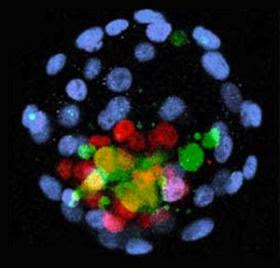
ScienceDaily (Oct. 20, 2008) — In a disease like ALS - one that's always fatal and that has a long history of research-resistant biology - finding a proof of principle in animal models is significant.
This week, Johns Hopkins researchers report that transplanting a new line of stem cell-like cells into rat models of the disease clearly shifts key signs of neurodegenerative disease in general and ALS in particular - slowing the animals' neuron loss and extending life.
The new work supports the hypothesis that artificially outnumbering unhealthy cells with healthy ones in targeted parts of the spinal cord preserves limb strength and breathing and can increase survival.
An account of the work appears online this week in Nature Neuroscience.
To view this complete article, please click the title above.
No comments:
Post a Comment